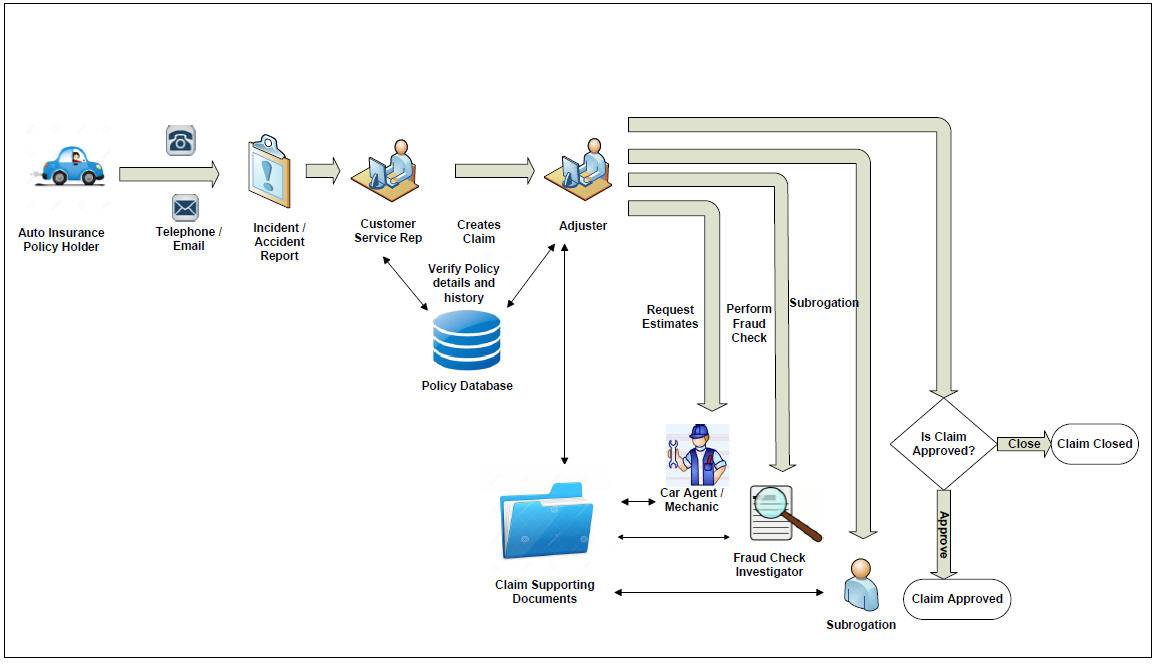Car Insurance Claims: Step-by-Step Process sets the stage for navigating the often daunting world of car insurance claims. Understanding the intricacies of filing a claim can make all the difference when accidents happen, ensuring that you are prepared and supported in your time of need. This guide will walk you through each phase of the claims process, from the initial steps right after an incident to the final settlement, helping to demystify what can be a confusing experience.
Whether you’re a new driver or just looking to brush up on your knowledge, this overview aims to equip you with the essential information you need to handle claims confidently and efficiently. By breaking down the steps involved, we highlight the importance of being well-informed, encouraging a proactive approach to insurance matters.
In today’s fast-paced digital world, the importance of effective communication cannot be overstated. Whether it’s in a professional or personal context, the ability to convey ideas clearly and concisely can significantly impact relationships, decision-making, and overall success. In this article, we will explore the various facets of effective communication and offer practical tips to enhance your skills.To begin with, let’s define what we mean by effective communication.
At its core, it refers to the ability to convey information in a way that is easily understood by the recipient. This involves not only the words we choose but also our tone of voice, body language, and the context in which we communicate. Effective communication is a two-way street; it requires both speaking and listening skills. This means being able to articulate your thoughts and being receptive to the ideas and feedback of others.One key aspect of effective communication is clarity.
When you communicate clearly, your audience is more likely to understand your message without confusion. This involves using simple, straightforward language and avoiding jargon unless you are sure that your audience is familiar with it. For instance, in a business setting, it’s crucial to ensure that everyone involved understands the objectives and tasks at hand. A clear Artikel or project brief can help achieve this.Another essential element is active listening.
Often, we focus so much on what we want to say that we forget to truly listen to others. Active listening involves fully concentrating on what the other person is saying, understanding it, and responding thoughtfully. This not only fosters better relationships but also helps to avoid misunderstandings. Practicing active listening can be as simple as maintaining eye contact, nodding in agreement, and paraphrasing what the speaker has said to ensure you’ve grasped the message correctly.Non-verbal communication plays a significant role in how our messages are received.
Body language, facial expressions, and even the physical distance between communicators can all influence the effectiveness of our interactions. For example, crossing your arms might signal defensiveness, while leaning slightly forward can convey interest and engagement. Being mindful of your non-verbal cues can enhance your communication by reinforcing the words you are saying.Additionally, emotional intelligence is a critical component of effective communication.
This refers to the ability to understand and manage your emotions, as well as those of others. When you possess high emotional intelligence, you are better equipped to navigate complex conversations and handle conflicts with grace. Being aware of your emotions can help you respond rather than react in discussions, leading to more productive outcomes.In professional environments, the tone of your communication can greatly affect the response you receive.
A friendly, approachable tone can encourage collaboration and open dialogue, while a harsh or dismissive tone can shut down conversations and create barriers. Striking the right balance in tone is essential for fostering a positive atmosphere, whether you’re giving feedback, presenting ideas, or engaging in negotiations.Moreover, the use of questions is a powerful tool in communication. Questions not only demonstrate your interest in a conversation but also encourage further discussion and clarification.
Open-ended questions, in particular, invite elaboration and can lead to deeper insights. For instance, instead of asking, “Did you finish the report?” you could ask, “What challenges did you face while working on the report?” This approach not only allows for more comprehensive answers but also shows that you value the other person’s perspective.In our increasingly digital world, understanding how to communicate effectively through written mediums is equally important.
Emails, text messages, and social media posts require a different set of skills compared to face-to-face interactions. When communicating in writing, it’s vital to pay attention to grammar, spelling, and punctuation, as these elements affect the professionalism of your message. Additionally, consider the tone you want to convey; written communication can easily be misinterpreted without the nuances of verbal cues.
Therefore, taking the time to proofread and consider how your message may be perceived is crucial.Another factor to consider is the audience. Tailoring your communication style to suit your audience can enhance its effectiveness. For instance, the language and tone you use when speaking with a colleague may differ from how you would communicate with a client or a superior.
Understanding your audience’s preferences, expectations, and backgrounds can help you craft messages that resonate well with them.Furthermore, providing constructive feedback is a vital aspect of effective communication, especially in workplace settings. When delivering feedback, it’s essential to be specific and focus on the behavior rather than the person. For example, instead of saying, “You did a terrible job on this project,” you could say, “I think the project could benefit from more detailed research in the introduction section.” This approach encourages improvement without demoralizing the individual.In conclusion, effective communication is a multifaceted skill that can be developed over time.
By focusing on clarity, active listening, non-verbal cues, emotional intelligence, tone, questioning techniques, and audience awareness, you can significantly enhance your ability to communicate effectively. Whether in your personal life or professional career, the ability to convey your thoughts and ideas clearly can lead to more fruitful interactions and ultimately pave the way for greater success. Remember, communication is not just about speaking; it’s about connecting with others and fostering understanding.




